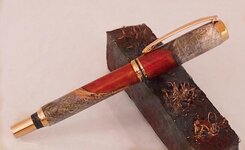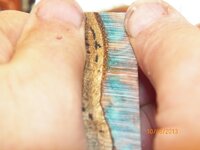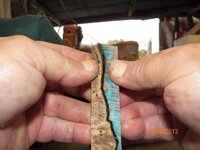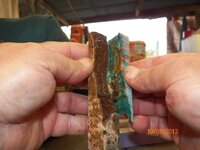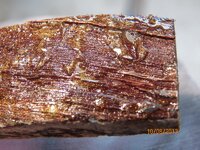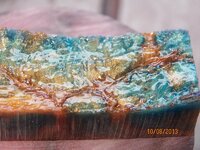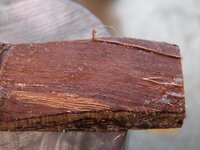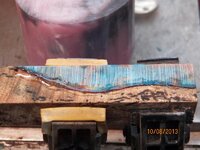I tried my first casting today. I had a feeling it wouldn't work from what I read. I have turned a good bit of alumilite worthless blanks but never seen any cast in polyester that I know of. Anyhow, I tried casting some olivewood burl with colored polyester resin and both blanks blew apart at the seams. I'm guessing the resin shrunk while curing and separated from the wood. As I was turning I could see that the two materials weren't joined nicely together at the seams. Also, it felt a little bit 'gummy' in a couple spots on the inside(after picking it up from the floor). Maybe I needed more mekp? I did let it cure for almost 2 days.
Is it worth while to try again with this type of resin or should I look into buying a pressure pot and alumilite? I really want to make these blanks. Thank you all!
Well, I've done enough blanks with Polyester (PR) to know a little bit about it and in this case, you have a few things to consider...!
Lets start with Olive wood of any kind, the wood contain lots of natural oils that bleed to the surface with heat. The "gummy" surface you see when you separate the resin from the wood, after cast, is no lack of MEKP at all, if the resin is set/hard to be worked with, you have sufficient hardener in the mix, if too much or not, it all depends of how brittle the resin cuts.
I have cast blanks with PR with many raw and stabilized species of woods and I can tell you that, some woods bond well to the PR and others don't.
I have used PR for a number of years and only recently I changed to Epoxy resin because, the PR didn't have the necessary requirements to machining in CNC machines and after I tested this Epoxy resin with many of the difficult woods to bond, was no hesitation and start using it on everything, almost 3 times more expensive that is the only negative side of it, no smell, no toxins so, a better choice also for my health...!
Now, coming back to "separation" with PR casting and some woods (oily, etc...!), coating the surface of the wood that will be in contact with the resin, never produced good results for me however, using the super thin CA to soak every joint of the blank after cast, has resolved 90% of separations.
The 10% failure was caused by blanks that did had absolutely no gap in the joints after cast, not allowing the thin CA to penetrate in the joint, even though, many of these gaps, you couldn't see them with the naked eye.
The super thin CA is your best friend when using PR resin to cast with woods, the thin viscosity of this CA is capable to penetrate the smallest of spaces, and this is the reason why my PR blanks did hold, I would prefer to see a tinny airline gap between resin and wood, the CA would go in and bond the 2 materials with great strength.
As mentioned previously, that "gummy" surface under the PR when the separation occur with oily woods, is due to the heat created by the PR when curing, bringing the wood natural oils to the surface, there is, between the wood and the resin and that is what makes the join to fail...!
I have attached some pics showing exactly that, and the process of cleaning that "gummy" surface and re-joint the resin in its place, there will be absolutely no signs that, CA was used after finished...!
Cheers
George

